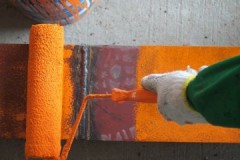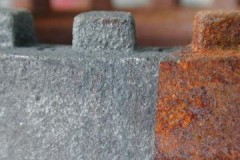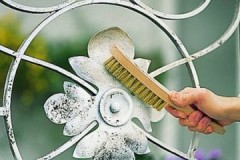Easy ways to clean the pipe from rust before painting
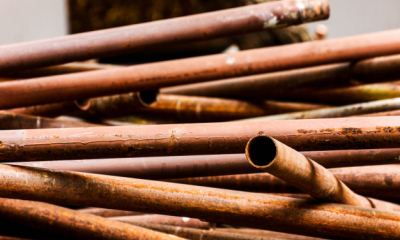 Metal pipes are prone to rust formation, which is their main disadvantage. This negatively affects their operation and significantly reduces their service life.
Metal pipes are prone to rust formation, which is their main disadvantage. This negatively affects their operation and significantly reduces their service life.
In order not to have to change the pipeline ahead of time, it is necessary to clean it from rust in a timely manner, not only from the outside, but also from the inside.
Read about how to clean the pipe from rust before painting.
Content
Cleaning process
Rust affects not only the quality of the pipe itself, but also the quality of the tap water. Its color and smell change for the worse. This liquid becomes unsuitable for drinking. Corrosion can be removed using household chemicals or mechanically.
Stripping outside
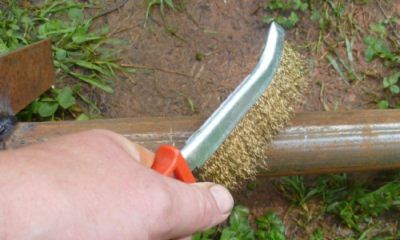 Mechanical cleaning involves the use of sandpaper or a wire brush.
Mechanical cleaning involves the use of sandpaper or a wire brush.
Procedure:
- Carefully clean off large pieces of rust.
- Treat the damaged area with quick circular motions.
- Rinse the surface with warm water and a little soap.
It is impossible to paint over a rusty pipe, as under the coating it will continue to rot and finally deteriorate.
Rust can be dealt with with acetic acid. Use it as follows:
- pour the essence into a suitable container, soak a sponge or brush with it;
- apply acid to the area affected by corrosion;
- leave to have an effect for 30 minutes;
- rinse the area with clean water.
Corrosion can be dealt with with an alkaline solution. Mode of application:
- Dissolve 2 tablespoons of baking soda in 1/3 cup of warm water.
- Apply the composition to the damaged surface.
- Leave to work for 20 minutes.
- Wash off the solution with clean water and a little vinegar. The acid will get rid of the oxide and soda residues.
In the fight against rust, hydrogen peroxide has proven itself well. It is not capable of damaging pipes, but it can cope with small areas of corrosion.
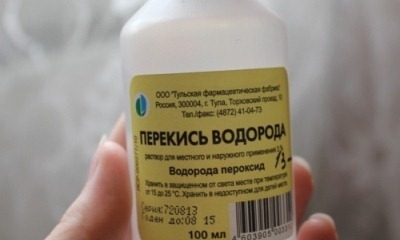 Mode of application:
Mode of application:
- clean the surface with a metal brush;
- moisten gauze or dense material folded in several layers in hydrogen peroxide;
- wrap the damaged section of the pipe with it and leave for 30 minutes;
- remove the gauze, rinse the surface with clean water.
Phosphoric acid quickly and effectively removes rust. To remove rust it is used in the following way:
- Acid is applied to the pipe surface with a natural bristle brush.
- Mechanical preliminary cleaning is required only if the oxide layer is very thick.
- To prevent the acid from drying out, the surface is regularly moistened.
- After 30 minutes, it is washed off with clean water, and the pipe itself is dried.
How to process it inside?
To clean the inside of the pipe from rust, you can use the following methods:
- Cleaning with a plumbing rope... It is flexible and long, with a comfortable handle at the end. When moving the cable through the pipe, it must be rotated. With the help of a cable, it will be possible to get rid of not only rust, but also from blockages, but you need to act carefully so as not to damage the metal walls.
-
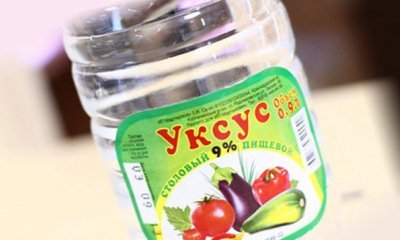 Acetic acid... It will help corrode the rust inside the pipe if not too much has accumulated. To do this, the essence is poured into the drain in an amount of 150-200 ml and left for half an hour.
Acetic acid... It will help corrode the rust inside the pipe if not too much has accumulated. To do this, the essence is poured into the drain in an amount of 150-200 ml and left for half an hour.Then they turn on the water and rinse the water supply for at least 10 minutes under a strong pressure of water.
- Oxalic acid... It is used by analogy with essence, but first the powder must be dissolved in water. 1 liter will require 20-40 g of acid. The holding time of the solution in the pipe is 30-60 minutes. Pour it into the drain with a thin stream.
- Soda and citric acid solution... 3 tablespoons of soda are poured into the drain, after which diluted lemon is poured (20 g per 1 liter of water). This will result in a lot of foaming, which is a normal chemical reaction. It is not recommended to turn on the water for the next 30 minutes.
- Water hammer... This is a classic plumbing technique that has been practiced for decades. However, it will not be possible to carry out such cleaning on your own; you will need special equipment that will be used by experienced workers. Cleaning the pipe from rust is achieved through the release of compressed air.
How to protect the surface from rusty deposits?
So that the pipes do not rust and rot outside, they are covered with special soil compounds, for example:
- FL-053,
- GF-032,
- PF-o46, etc.
Prevent corrosion by coating with enamel or paint. In this case, you need to monitor the quality of the applied layer and regularly update it.
There are no specific ways to protect the inner surface of pipes from rust. In order to prevent them from rotting, you need to rinse them with special store formulations once every 2 months., or weakly concentrated acid solutions.
The best store products
There are compounds on sale for removing rust from both the inside and outside of the pipe. Top 3 effective remedies:
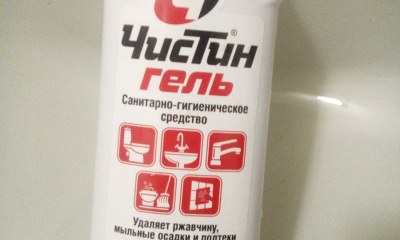 Prosept. Concentrated thick agent for removing rust from the inner surface of pipes. One cleaning will require 350 ml of gel. The exposure time is 2 hours. The price for 1 liter is 158 rubles.
Prosept. Concentrated thick agent for removing rust from the inner surface of pipes. One cleaning will require 350 ml of gel. The exposure time is 2 hours. The price for 1 liter is 158 rubles.- Chistin gel... The tool is used to remove rust and blockages in pipes. The gel is poured into the sewer in an amount of 250 ml, left for 15 minutes, washed with a powerful stream of water. The cost of 0.5 liters is 45 rubles.
- Fill Inn Zinc Converter... This product can deal with rust layers up to 100 microns thick. It can handle the outer surface of cast iron, steel and other metal pipes. The cost of a 0.4 liter package is 164 rubles.
Helpful information
Tips to help clean the pipe from rust efficiently and safely:
- so that the chemical compounds do not damage the pipe walls, they must not be left inside for longer than the time indicated in the instructions;
- after cleaning is completed, the treated surface must be rinsed with a sufficient amount of water;
- preventive cleaning must be carried out at least 1 time in 3 months;
- when working with chemical compounds it is necessary to use personal protective equipment: respirator, mask and rubber gloves.
Related videos
How to properly clean the pipe from rust, the video will tell you:
Conclusion
It is possible to remove rust from the outer and inner surfaces of the pipe using a mechanical method or using chemical compounds. You can cope with the problem with improvised means, or purchase specialized household chemicals in the store.


